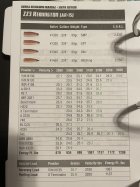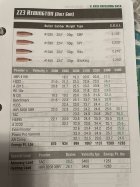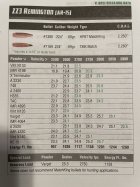Folks, to the first order, pressure and velocity are coupled, but not one for one between different guns.
Now we add the concept that the powders, primers, brass, and bullets also have some variations over time, and we have some scatter between the versions of the books based on those combinations.
For example in a given rifle you could expect that if a pressure went up, so did the speed. However, pull a different rifle off the rack and the fundamentals stay the same but the pressure plot changes even if it is ammo from the identical batch.
Since force, acceleration, pressure, and velocity are all related in basic terms, we have to remember that the velocity results from an integration of the pressure over time. So think of it like the area under the pressure curve.
Two different barrels of the same caliber, but different chamber designs and lengths, can run the same ammo safely enough, but the two can give significantly different velocities because their pressure curves were slightly different.
As a result.... Any generation or revision of their ammo manuals can be different based on the test barrels and what the barrels, bullets, powders, etc., are doing at that era.
Now that we have said the above.... the tolerance and noise in pressure plots and the difference in velocities between guns is not tight enough to say your barrel will exactly track their data even if it is the same length.
That said, if you are following good practice with respect to safety, and not playing at the high end of pressure, your safety margin should still keep you in the green zone with the majority of guns and the recipes from load manuals.
Between high quality service rifle barrels and all the variations of the junk out there, and the differences in sporter barrels and hunting guns, then the the high quality match guns, the same ammo will show a wide variation in speed (pressure). If by magic you could test some of the ammo from a different era in those same guns, would you be that surprised if the velocity was different?
We load military ammo to specification using bulk propellants that must be adjusted by the batch. It still has to stay within pressure limits, but the charges can be adjusted to match the speed requirements within those limits. In those contexts, the standardization of the rifles is a big part of the picture.
When starting into strange territory with loading, try to keep all that scatter in mind. Try to reference as many different manuals/sources as you can and pay attention to the basic differences in their test methods if they list them.
There are differences between habits of the different manuals that range from test machines to actual commercial rifles. Don't be too upset if your rifle doesn't exactly track their data, but also be on the watch for signs of trouble. When we load the ammo, it is our responsibility to own the results.



















